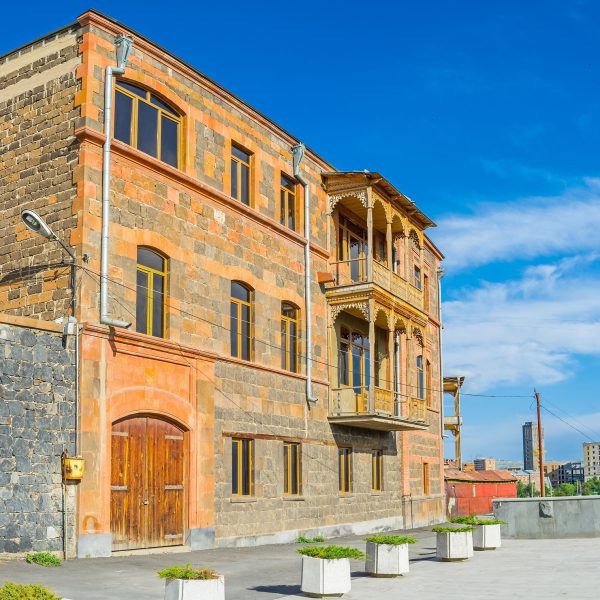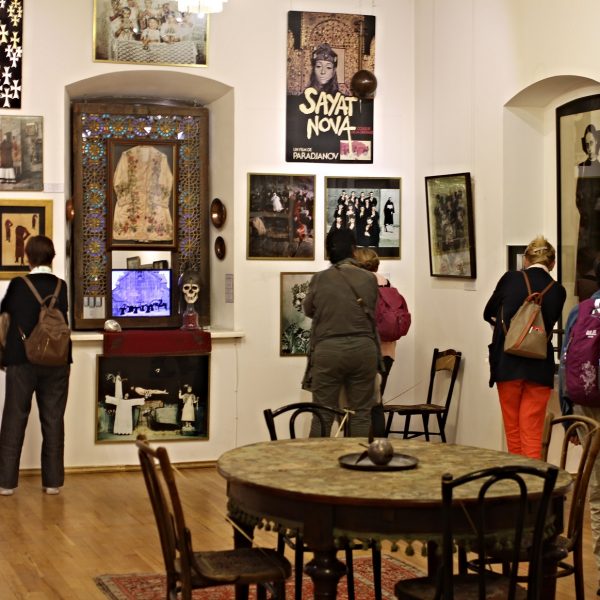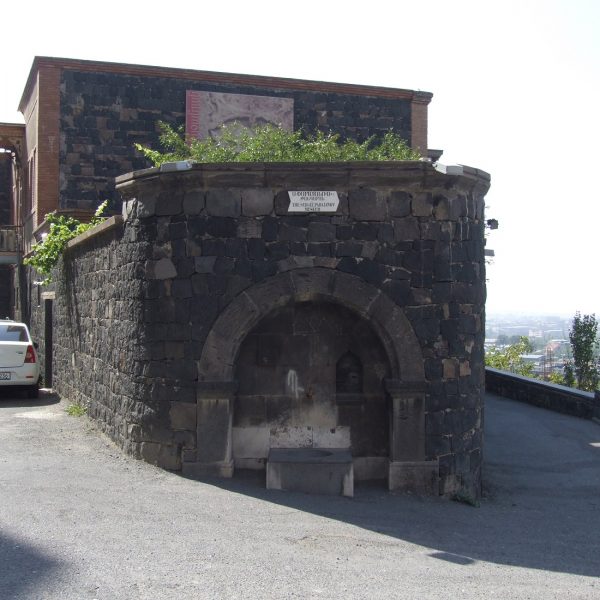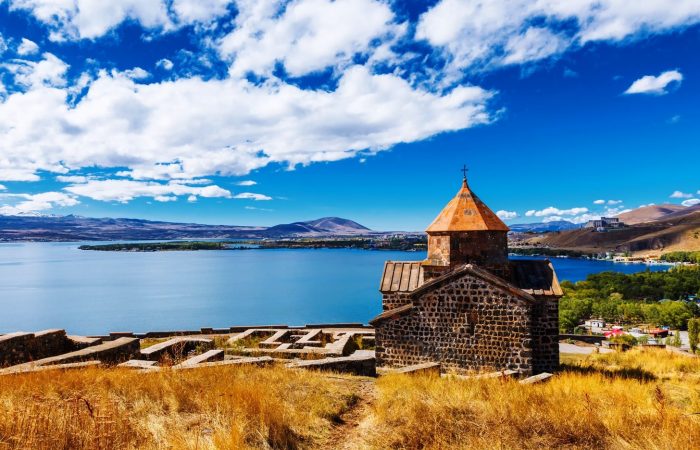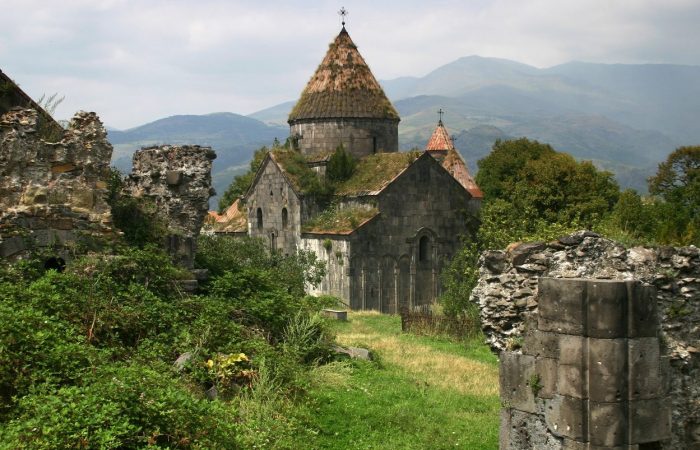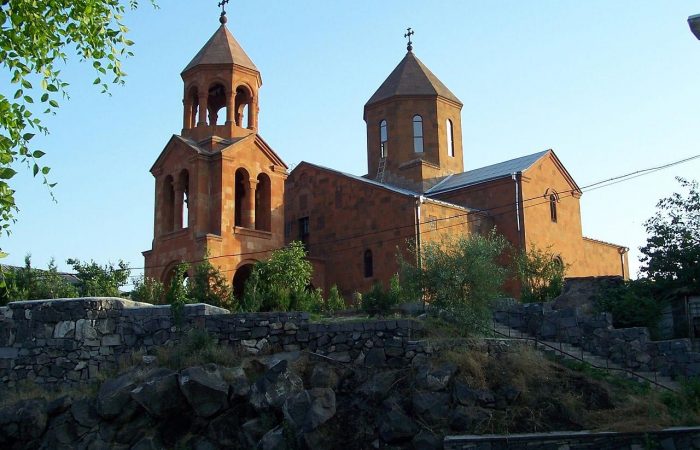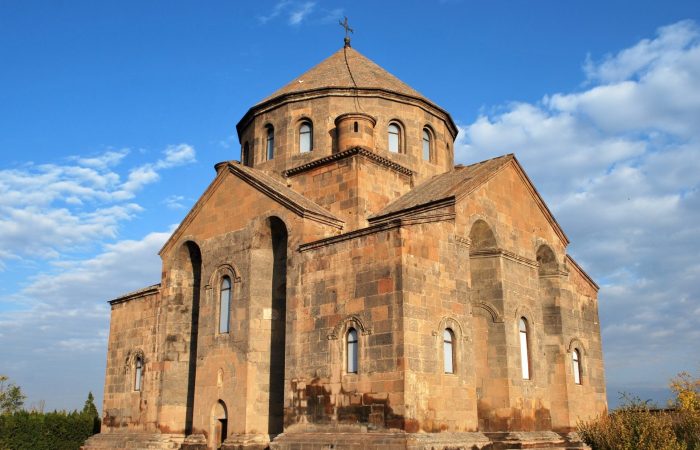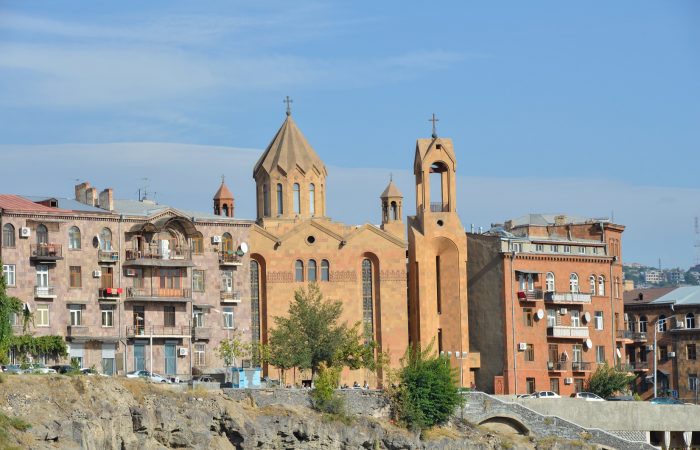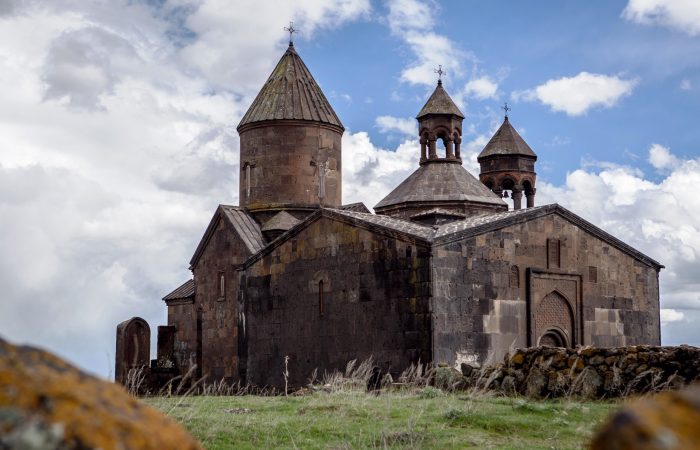Parajanov has been arrested in his life for several times, once for homosexuality, the other time for bribery and so forth. If in case of other people this would be enough to stop working and creating masterpieces or simply works of art, then the same cannot be said for Parajanov. He was imprisoned but no walls could imprison his talent and decrease his spirit of creation. And apparently, it’s during these years that his talent of an artist came to be more evident and underlined. And it’s in regard to this that he would say “I was not allowed to make movies and I started to make collages. Collage is a compressed film.” The collages and the drawings he made were fascinating, while his letters bore an abundance of wisdom.
In 1966 Parajanov worked on a movie about Sayat Nova more known as “The Color of Pomegranates.” The movie was screened in 1969 and in the following 15 years he was basically deprived of making movies. Parajanov’s art remarkably stands out and in this respect, no one will hardly mistaken or confuse his movies. Parajanov’s cinema language is rather difficult but those who understand it watch his movies with greatest admiration and respect towards the remarkable movie director.
Some of the most impressive movies Parajanov created during his lifetime are:
- Andriesh (1954) – It’s a 60 minute Moldavian tale about shepherd Andriesh who is gifted with a magic flute, which should help him while traveling to evil sorcerer’s castle whom he must defeat.
- The first Lad (1958) – It’s an 85 minute color musical comedy. The movie is also known as “The top Guy” and “Pervy Paren.”
- Hands of Gold (1960) – It’s a 35 min documentary on Ukrainian folk art.
- Ukrainian Rhapsody – It’s a 90 minute movie about two lovers separated during World War II.
- Shadows of Forgotten Ancestors” (1964) – This movie is the director’s Ukrainian masterpiece.
- Kiev Frescos (1966) – this movie was banned while filming. Only the 10 to 14 minutes have survived.
- The Color of Pomegranates (1968) – Also known as “Sayat Nova” this 75 minute movie recounts about the life (birth, growing up, falling in love, going to monastery and death) of Armenian troubadour Sayat Nova. The movie is one the most remarkable masterpieces of the 20th century.
- The Legend of Suram Fortress (1984) – This 88 minute long movie represents a surreal ode to Georgian warriors.
- Ashik-Kerib (1989) – Ashik-Kerib is a 75 minute long movie about an Azeri love story. It’s based on a fairy tale by the director’s favorite Russian poet Mikhail Lermontov.
Parajanov passed away on July 20 in 1990.
Museum of Sergei Parajanov
Sergei Parajanov Museum was opened a year later the great maestro passed away. It was initially founded by the Armenian Government in 1988 and came with two buildings. One of them was expected to house the museum, while the second was supposed to be Parajanov’s home. Nevertheless, the museum’s construction was stopped because of the disastrous Spitak Earthquake that occurred in 1988. The construction works were later resumed and so the museum was ultimately opened in 1991. Consequently, Parajanov never actually lived in his house-museum.
The museum’s collection consists of over 1400 artworks, among them unpublished screenplays and librettos. Still back in 1988 and 1989 the large part of those works was exhibited in the Museum of Armenian Folk Art. Upon Parajanov’s will the furnishings and his personal belongings from his childhood house were brought to Armenia. The museum’s exposition features over 250 works, documents and photos. Notably, the assemblages, collages , hats, dolls and movie sketches Parajanov created were the result of his 5 years of imprisonment and 15 years of unemployment, and therefore they clearly reflect the artist-director’s reaction to life.
The museum is one of the rare museums in Yerevan that is open seven days a week. It’s open from 10.30 am to 5 pm. The ticket to the museum will cost you 700 Dram. The museum offers guided tours in five languages – Armenian, French, English, Russian and French. A guided tour in Armenian will cost you 2000 Dram, while a guided tour in one of the mentioned foreign languages will cost you 2500 Dram.
Address: Dzoragiugh Ethnographic Center,
Blds 15&16
Tel.: (374 10) 538 473
E-mail: [email protected]
Website: http://parajanovmuseum.am/

